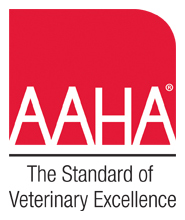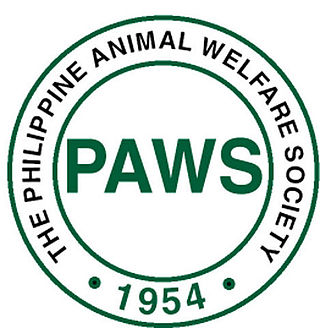Related Research Articles

In medicine, triage is a practice invoked when acute care cannot be provided for lack of resources. The process rations care towards those who are most in need of immediate care, and who benefit most from it. More generally it refers to prioritisation of medical care as a whole. In its acute form it is most often required on the battlefield, during a pandemic, or at peacetime when an accident results in a mass casualty which swamps nearby healthcare facilities' capacity.

Veterinary medicine is the branch of medicine that deals with the prevention, management, diagnosis, and treatment of disease, disorder, and injury in animals. Along with this, it deals with animal rearing, husbandry, breeding, research on nutrition, and product development. The scope of veterinary medicine is wide, covering all animal species, both domesticated and wild, with a wide range of conditions that can affect different species.
A medical emergency is an acute injury or illness that poses an immediate risk to a person's life or long-term health, sometimes referred to as a situation risking "life or limb". These emergencies may require assistance from another, qualified person, as some of these emergencies, such as cardiovascular (heart), respiratory, and gastrointestinal cannot be dealt with by the victim themselves. Dependent on the severity of the emergency, and the quality of any treatment given, it may require the involvement of multiple levels of care, from first aiders through emergency medical technicians, paramedics, emergency physicians and anesthesiologists.
The American Society for the Prevention of Cruelty to Animals (ASPCA) is a non-profit organization dedicated to preventing animal cruelty. Based in New York City since its inception in 1866, the organization's mission is "to provide effective means for the prevention of cruelty to animals throughout the United States."

A veterinarian (vet), also known as a veterinary surgeon or veterinary physician, is a medical professional who practices veterinary medicine. They manage a wide range of health conditions and injuries in non-human animals. Along with this, vets also play a role in animal reproduction, animal health management, conservation, husbandry and breeding and preventive medicine like animal nutrition, vaccination and parasitic control as well as biosecurity and zoonotic disease surveillance and prevention.

Pet adoption is the process of transferring responsibility for a pet that was previously owned by another party such as a person, shelter, or rescue organization. Common sources for adoptable pets are animal shelters and rescue groups. Some organizations give adopters ownership of the pet, while others use a guardianship model wherein the organization retains some control over the animal's future use or care.

Carprofen is a non-steroidal anti-inflammatory drug (NSAID) of the propionic acid class that was previously for use in humans and animals, but is now only available to veterinarians for prescribing as a supportive treatment for various conditions in only animals. Carprofen reduces inflammation by inhibition of COX-1 and COX-2; its specificity for COX-2 varies from species to species. Marketed under many brand names worldwide, carprofen provides day-to-day treatment for pain and inflammation from various kinds of joint pain, as well as post-operative pain.

There are many aspects to horse management. Horses, ponies, mules, donkeys and other domesticated equids require attention from humans for optimal health and long life.
Pet insurance is a form of insurance that pays, partly or in total, for veterinary treatment of the insured person's ill or injured pet. Some policies will pay out when the pet dies, or if the pet is lost or stolen.
A veterinary pharmacist is a specially trained pharmacist who dispenses veterinary drugs and supplies or products and advice to owners of companion animals and livestock. In addition, they advise the regulatory bodies and are involved in the formulation of veterinary drugs. Veterinary pharmacy is a field of pharmacy practice, in which veterinary pharmacists may compound medications, fill prescriptions, and manage drug therapies for animals. Veterinary pharmacists are licensed pharmacists who specialize in the distribution of medications for animals.

The American Animal Hospital Association (AAHA) is a non-profit organization for companion animal veterinary hospitals. Established in 1933, the association is the only accrediting body for small animal hospitals in the U.S. and Canada. The association develops standards for veterinary business practices, publications, and educational programs. Any veterinary hospital can join AAHA as a member, but must then pass an evaluation in order to receive AAHA accreditation.
Alternative veterinary medicine is the use of alternative medicine in the treatment of animals. Types alternative therapies used for veterinary treatments may include, but are not limited to, acupuncture, herbal medicine, homeopathy, ethnomedicine and chiropractic. The term includes many treatments that don't have enough evidence to support them being a standard method within many veterinary practices.

The Philippine Animal Welfare Society (PAWS) is a volunteer-based, non-government organization whose goal is to prevent animal cruelty through education, animal sheltering and advocacy, based in Quezon City, Philippines. It was founded in 1954 by Muriel Jay. PAWS believes that the creation of a more peaceful society starts with the widening of mankind's circle of compassion which includes animals, thereby envisions a nation that respects animals, practices responsible pet ownership and protects wildlife. The volunteer-based organization rehabilitates these animals in the hope of finding them new homes and a second chance at a good life. PAWS does not take in pets of other people, but only victims of cruelty or neglect where the animal offenders are charged with violation of the Animal Welfare Act in court.

The Massachusetts Society for the Prevention of Cruelty to Animals-Angell Animal Medical Center (MSPCA-Angell) is a 501(c)(3) non-profit organization with its main headquarters on South Huntington Avenue in the Jamaica Plain neighborhood of Boston, Massachusetts. It was founded in 1868, and is the second-oldest humane society in the United States. "MSPCA-Angell" was adopted as the society's identity in 2003, and indicates the names of its two closely related predecessor organizations: Massachusetts Society for the Prevention of Cruelty to Animals and Angell Animal Medical Center. The organization provides direct care to thousands of homeless, injured, and abused animals each year, and provides animal adoption, a veterinary hospital, advocacy, and humane law enforcement.
Pet orthotics refers to the use of orthotics for pets. Orthotics is an allied health care field concerned with the design, development, fitting, and manufacture of orthoses. Orthoses, sometimes called braces or splints, are devices that support or correct musculoskeletal deformities and/or abnormalities of the body.

Paraveterinary worker is the professional of veterinary science that performs procedures autonomously or semi autonomously, as part of a veterinary assistance system. The job role varies throughout the world, and common titles include veterinary nurse, veterinary technician and veterinary assistant, and variants with the prefix of 'animal health'.

Veterinary medicine in the United States is the performance of veterinary medicine in the United States, normally performed by licensed professionals, and subject to provisions of statute law which vary by state. Veterinary medicine is normally led by veterinary physicians, termed veterinarians or vets.

The KAT Centre Nepal is a nonprofit organization in Nepal. The KAT Centre's goals are to create a healthy, sustainable street dog population, reduce animal cruelty, and eliminate rabies, around Kathmandu, Nepal.
The Abu Dhabi Falcon Hospital (ADFH) is the first public medical institution exclusively for falcons in the United Arab Emirates. Established by Environment Agency – Abu Dhabi and opened on 3 October 1999, Abu Dhabi Falcon Hospital has become the largest falcon hospital in the UAE and in the world with a patient influx of approximately 11,000 falcons per year. The ADFH describes their mission as a goal "To protect, conserve, research, and promote captive-bred and wild falcons health, wildlife, and falconry tradition. To lead efforts of Abu Dhabi government to improve and protect animal welfare and to increase awareness and responsibility of people for animal welfare as the leading center for animal healthcare and welfare in Abu Dhabi Emirate."
The Canadian Veterinary Medical Association (CVMA), founded in 1876, provides leadership on national veterinary issues, advocates for animal welfare, and works to encourage life balance in veterinary professionals.
References
- ↑ HealthyPet.com http://www.healthypet.com/PetCare/PetCareArticle.aspx?art_key=cf15470d-b5bb-43de-8ccd-8655990a45fa Pet Care - Pet First Aid, HealthyPet.com
- ↑ Shojai, Amy (2001). The First-Aid Companion for Dogs & Cats . Rodale Inc. pp. 16. ISBN 1579541976.
- 1 2 Zink, Christine; Barr, Tracy (2010). First Aid For Pets For Dummies®, Portable Edition. Hoboken: John Wiley & Sons. ISBN 9781118042908.
- ↑ Day, Thomas (2006). The Pet Lover's Guide to First Aid & Emergencies . St. Louis: Elsevier Health Sciences. pp. 6. ISBN 9781416025313.
- ↑ Ashton, Natasha (6 April 2016). "Brush Up On Basics for Pet First Aid Awareness Month". Huffington Post. Retrieved 2018-08-24.